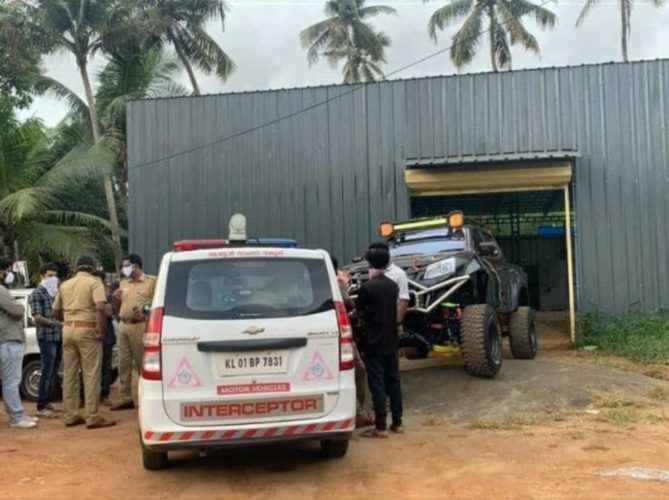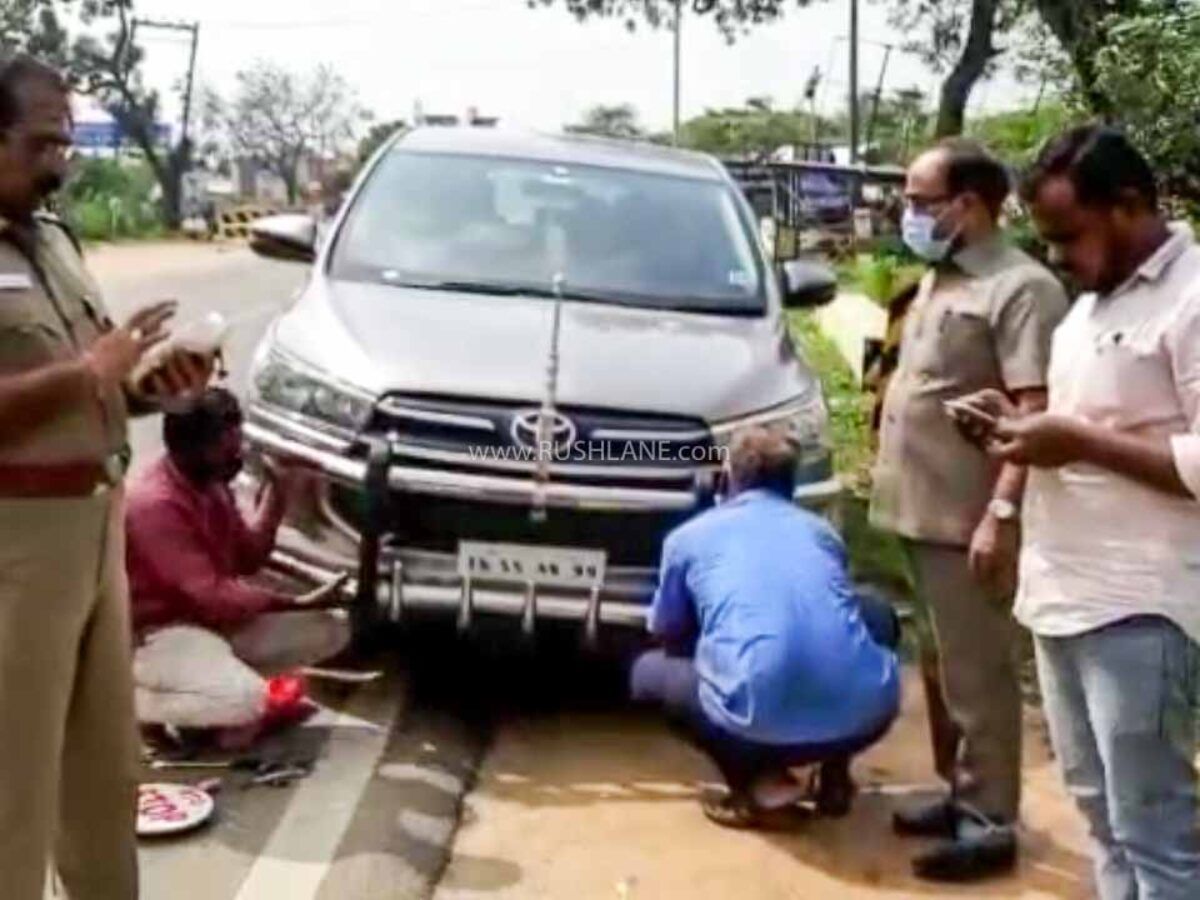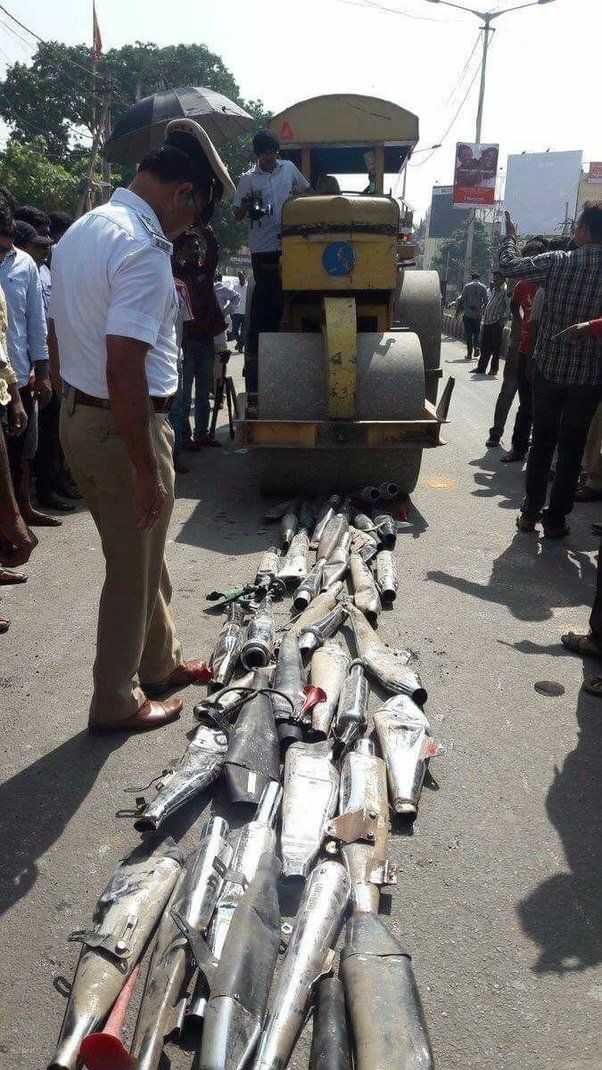RTO Permission for Car Modification: A Comprehensive Guide by an MVI
Published On 15/7/2024, 7:31:36 am Author Hritik BaberwalCar modification is a popular trend among automobile enthusiasts who want to personalize their vehicles and enhance performance. However, it’s essential to understand that not all modifications are legal, and some require permission from the Regional Transport Office (RTO).

Car modification involves altering the factory specifications of a vehicle, including changes to the engine, body, interior, and exterior parts. While some modifications are purely aesthetic, others aim to improve performance or add new functionalities. It’s crucial to note that any modification affecting the vehicle’s structural integrity, safety, or emissions requires RTO approval.
We talked to a Motor Vehicle Inspector regarding the modification aspects and he gave pretty detailed insight on it. Here you go:
Legal Framework for Car Modification in India
The Motor Vehicles Act, 1988, and the Central Motor Vehicle Rules (CMVR), 1989, govern vehicle modifications in India. According to Section 52 of the Motor Vehicles Act, no vehicle owner can alter the vehicle's specifications in a way that differs from what is originally registered without prior approval from the RTO. The following are key points from the legal framework:
- Structural Modifications: Any alteration that changes the vehicle's chassis, body, or frame requires RTO approval.
- Engine Modifications: Changing the engine capacity or type must be approved and updated in the vehicle registration certificate.
- Emission Standards: Modifications must comply with Bharat Stage (BS) emission norms.
- Safety Standards: All modifications should adhere to safety standards prescribed by ARAI and other relevant authorities.
Guidelines from the Automotive Research Association of India (ARAI)
ARAI plays a pivotal role in ensuring that vehicle modifications do not compromise safety and environmental standards. Here are some guidelines from ARAI:
Bumper Guards: Bumper guards, especially metal ones, are not allowed as they can interfere with the effectiveness of crumple zones and airbag deployment, thereby compromising passenger safety. They also pose a significant risk to pedestrians, as the rigid structure can cause severe injuries in the event of a collision.
Protruding Tyres: Modifications that result in tyres protruding beyond the vehicle body are illegal as they can lead to accidents and increased road wear. Protruding tyres also increase the risk of splashing water and debris, which can be hazardous to pedestrians and other vehicles.
Chassis Modifications: Alterations to the chassis can affect the structural integrity of the vehicle and are strictly regulated. Any changes to the chassis must be approved to ensure that the vehicle maintains its crashworthiness and safety features.
Engine Swaps: Replacing the engine with one of a higher capacity without approval can lead to increased emissions and safety risks. Unauthorized engine swaps can also affect the vehicle's balance and handling, making it unsafe to drive.
Loud Exhausts: Installing exhaust systems that exceed permissible noise levels is prohibited. Excessive noise can cause hearing damage and contribute to noise pollution, affecting both drivers and pedestrians.
Neon Lights: Underbody neon lights and other distracting lighting modifications are illegal. These lights can cause glare and distraction, increasing the risk of accidents.
Tinted Windows: Using tinted films beyond the prescribed Visible Light Transmission (VLT) limits is against the law. Overly tinted windows reduce visibility for the driver and can hinder the identification of occupants in case of emergencies.
Judicial Intervention and Real-Life Cases
The judiciary has played a significant role in upholding vehicle modification laws. Several landmark cases highlight the consequences of illegal modifications:
Case: S. Rajaseekaran v. Union of India (2018): The Supreme Court emphasized the need for stricter enforcement of vehicle safety standards and prohibited the use of crash guards and bull bars. The court highlighted the dangers posed to pedestrians and mandated the removal of such illegal modifications.

Case: Azeem Khan v. State of Karnataka (2019): The Karnataka High Court ruled against the use of high-intensity discharge (HID) lamps, citing safety concerns for other road users. The court directed the authorities to take strict action against vehicles with non-compliant lighting systems.

Case: Abhishek v. Union of India (2020): The Delhi High Court directed authorities to crack down on illegal vehicle modifications, particularly focusing on aftermarket exhaust systems. The court underscored the need to maintain noise levels within permissible limits to protect public health and safety.

Process for Obtaining RTO Permission for Car Modification
Not all modifications are illegal; some can be legally performed by applying for permission from the Regional Transport Office (RTO). Understanding the types of modifications that can be approved and the process for obtaining this permission is essential for vehicle owners who want to customize their cars while staying within the legal framework.
Types of Modifications Requiring RTO Permission
Engine Modifications:
- Engine Swaps: Replacing the existing engine with one of a different capacity or type.
- Turbochargers/Superchargers: Adding performance-enhancing components.
Body Modifications:
- Body Kits: Adding or modifying bumpers, side skirts, and spoilers.
- Roof Modifications: Installing sunroofs or convertible tops.
Chassis Modifications:
- Suspension Changes: Lowering or lifting the suspension.
- Frame Alterations: Modifying the vehicle’s frame for aesthetic or performance reasons.
Paint and Wraps:
- Custom Paint Jobs: Applying unique colors or designs.
- Vehicle Wraps: Covering the vehicle with vinyl wraps for advertising or aesthetic purposes.
To legally modify your car, you must obtain permission from the Regional Transport Office (RTO). The process begins with submitting an application detailing the proposed modifications, including technical specifications, drawings, and relevant documents such as the vehicle’s registration certificate, pollution under control (PUC) certificate, and insurance papers. Once submitted, the RTO schedules an inspection to ensure that the modifications comply with safety, structural integrity, and emission standards set by the Automotive Research Association of India (ARAI). If the modifications meet all legal requirements, the RTO grants approval and updates the vehicle’s registration certificate to reflect the changes. It is crucial to ensure that certified professionals carry out the modifications as per the approved specifications. After the modifications are completed, a final inspection by the RTO may be required to verify compliance. Upon passing this inspection, the RTO issues a certificate confirming that the vehicle has been legally modified and is fit for road use. This process ensures that modifications are safe, legal, and maintain the vehicle's insurance validity and resale value.
Modifications That Don't Require RTO Permission
While certain car modifications require RTO permission due to their impact on vehicle safety, structural integrity, and emissions, there are several modifications that can be done without seeking approval. These modifications are typically cosmetic or minor changes that do not alter the fundamental specifications of the vehicle. Here are some common modifications that don't require RTO permission:
- Aesthetic Enhancements:
Paint Jobs and Vinyl Wraps: Changing the color of your car or applying vinyl wraps for aesthetic purposes does not require RTO approval as long as the new color is updated in the registration certificate.
Decals and Stickers: Adding decals, stickers, or other non-structural decorative elements to the exterior or interior of the vehicle.
- Wheels and Tyres:
Alloy Wheels: Replacing steel wheels with alloy wheels of the same size as specified by the manufacturer.
Tyres: Upgrading to high-performance tyres within the manufacturer-recommended size and specification limits.
- Minor Exterior Modifications:
Roof Rails and Spoilers: Installing roof rails for carrying luggage or non-structural spoilers that do not affect the vehicle’s aerodynamics significantly.
Mud Flaps and Side Steps: Adding mud flaps or side steps for practical purposes and improved aesthetics.
Lighting Upgrades:
LED Bulbs: Replacing existing bulbs with LED bulbs that comply with prescribed brightness levels.
Interior Lighting: Installing ambient lighting inside the vehicle for aesthetic purposes, as long as it does not cause glare or distraction.
Fines and Penalties for Illegal Car Modifications
In India, modifying your car without proper approval from the Regional Transport Office (RTO) can lead to significant fines and penalties. These penalties are imposed to ensure vehicle safety, environmental protection, and adherence to legal standards. Here’s what you need to know about fines for illegal car modifications:
Legal Framework:
According to the Motor Vehicles Act, 1988, and the Central Motor Vehicle Rules (CMVR), 1989, any modification that alters the vehicle's original specifications requires prior approval from the RTO.
Modifications affecting safety, emissions, or structural integrity without RTO permission are considered illegal.
Types of Penalties:
Fine: Vehicle owners found with illegal modifications can face fines ranging from ₹1,000 to ₹5,000, depending on the severity of the violation.
Impounding: In serious cases, the RTO may impound the vehicle until the illegal modifications are reversed or corrected.
License Disqualification: Repeat offenders or those found in severe violation of vehicle modification laws may face license disqualification for a specified period.
Common Illegal Modifications and Associated Fines:
Loud Exhausts: Installing aftermarket exhaust systems that exceed permissible noise levels can result in fines and the requirement to replace the exhaust system to comply with legal limits.
Bumper Guards and Bull Bars: Using crash guards or bull bars that are not approved by the RTO can lead to fines due to safety concerns for pedestrians and other road users.
Protruding Tyres: Modifications that cause tyres to protrude beyond the vehicle body can lead to fines for endangering road safety and causing road wear.
Non-compliant Lighting: Installing high-intensity discharge (HID) lamps or neon lights that do not meet legal standards for brightness and color can result in fines and the requirement to replace them with compliant lighting.
Enforcement and Legal Consequences:
RTO officials and law enforcement agencies conduct regular checks to identify vehicles with illegal modifications.
If found in violation, vehicle owners are issued fines and may be required to rectify the modifications to comply with legal standards.
Continued non-compliance can lead to legal action, including court appearances and increased fines.
Impact on Insurance and Resale Value:
Vehicles with illegal modifications may face challenges in insurance coverage, as insurers may refuse claims arising from accidents involving illegally modified vehicles.
Resale value of vehicles with illegal modifications can decrease significantly, as buyers prefer vehicles that comply with legal standards and are eligible for insurance coverage.
Legal Advice and Compliance: To avoid fines and penalties, consult with certified professionals and seek proper approval from the RTO before making any modifications to your vehicle. Stay informed about local regulations and standards regarding vehicle modifications to ensure compliance and avoid legal consequences.
















